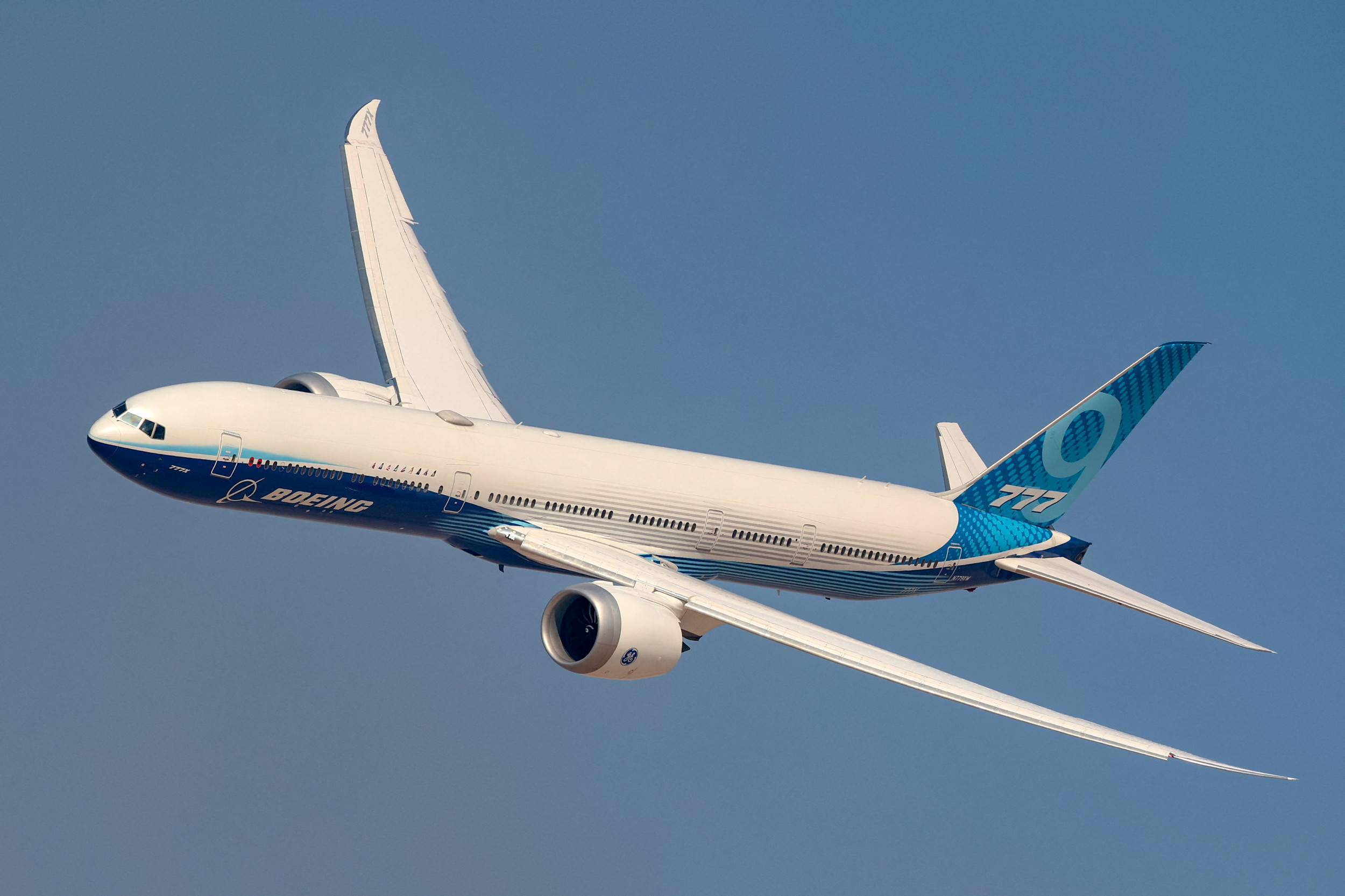
777X: THE PLANE THAT BOEING'S FUTURE DEPENDS ON
In what has been a bruising year for Boeing, the Federal Aviation Administration (FAA) gave the company the green light this week to start test flights required for the 777-9 to be approved for passenger service.
The approval provides a much-needed boost for the U.S. aerospace giant, especially as it seeks to recover from the financial and reputational impacts of the 737 MAX crisis that followed two fatal crashes of its jets in 2018 and 2019 that killed a total of 346 people.
The 777-9 is the latest addition to Boeing's fleet and part of the wider 777X project, launched in 2013 as an upgrade to the 777 family of wide-body commercial airplanes. The FAA's approval for the 777X project is crucial for Boeing's future, potentially unlocking new orders for the aircraft.
As Boeing faces intense public scrutiny and economic pressures, the success of the 777X is vital for the company's future in the commercial aviation market. After Airbus discontinued its A380 superjumbo jet due to a lack of sales, the 777X is now the largest new commercial jet available to airlines.
The 777 test fleet will now "undergo the most thorough commercial flight test effort Boeing has ever undertaken," Boeing said in a statement to Newsweek.
The World's Largest Twin-Engine Jet
The 777X is an enhanced and larger variant of the original 777 twinjet, which was first introduced in the mid-1990s. With a seating capacity ranging from 384 to 426 passengers, depending on the configuration, the 777X is touted as the world's largest and most efficient twin-engine jet.
The aircraft features new engines and new carbon composite wings, which are so long that Boeing had to design 11-foot-long wingtips that fold up to allow the plane to fit at standard airport gates. The wingtips can fold when the plane is on the ground, reducing the wingspan overall to 23 feet.
One of the standout features of the 777X is its new GE9X engines, which are the largest and most powerful commercial jet engines ever built, according to the company. These engines contribute significantly to the aircraft's improved fuel efficiency and lower emissions.
The 777X also boasts a spacious cabin inspired by the Boeing 787 Dreamliner, but bigger and wider. It includes larger windows, improved cabin pressure and higher humidity levels, all designed to enhance passenger comfort.
Up front, the 777X flight deck features multi-touch displays — a first in commercial aviation — allowing both pilots to interact with the screens simultaneously. Bracing features around the touchscreen bezels provide pilots with additional stability when interacting with the displays during turbulent conditions, ensuring accuracy and reliability in command inputs.
Originally scheduled for delivery in 2020, the program encountered numerous delays and setbacks, including those related to the certification process. With 481 orders from airlines such as Emirates, Qatar Airways, and Lufthansa already on the books, the 777X is likely to present a much-needed new revenue stream for Boeing.
An analyst for Deutsche Bank recently estimated that the 20 or so Boeing 777s already manufactured and in storage could translate to a $2 billion revenue bump for the company by the end of next year, assuming the testing goes off without a hitch and the planes can be delivered to clients.
Do you have a story we should be covering? Do you have any questions about this story? Contact [email protected].
2024-07-16T13:26:32Z dg43tfdfdgfd